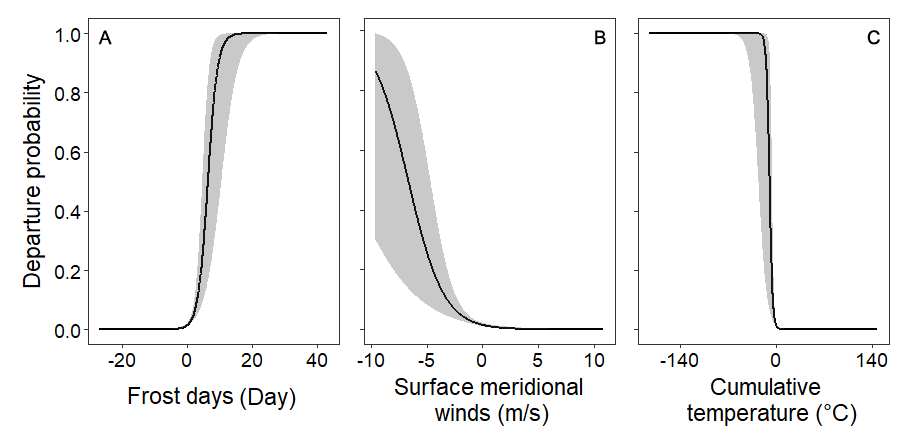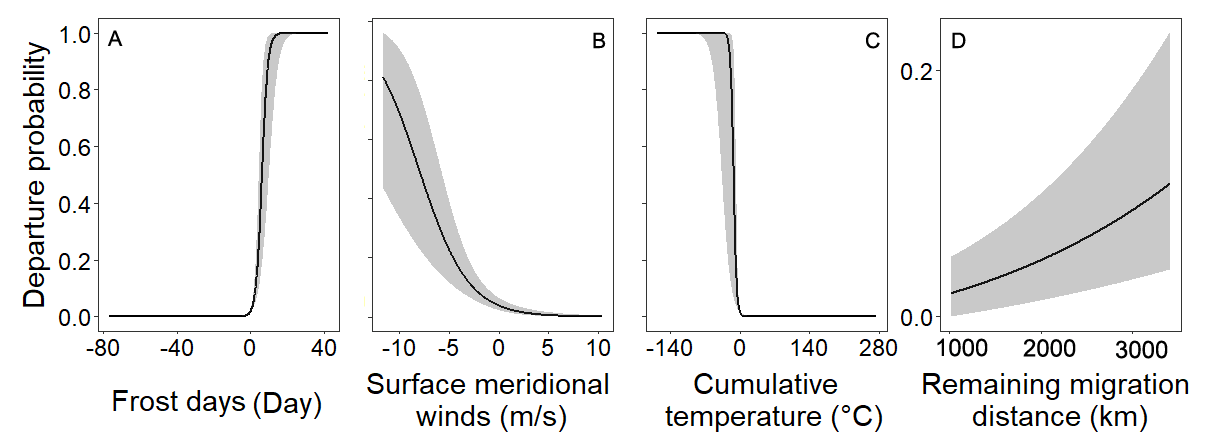In February 2019, Ph.D. candidate Fei Xu and her supervisor Yali Si published a paper entitledThe frost wave hypothesis: How the environment drives autumn departure of migratory waterfowlinEcological Indicators.
Migration phenology plays a critical role in shaping the life history of birds. While the spring migration phenology has been widely studied, the understanding on the mechanisms underlying autumn migration is limited. Frost is an indicator of cold weather, food scarcity, and water unavailability, but how it would drive the autumn departure of migratory waterfowl has not yet been quantified. In this study they propose the ‘frost wave hypothesis’, which posits that the autumn departure of waterfowl is driven by a successive wave of the onset of frost. Using multi-species bird satellite tracking data and generalized linear mixed models, they analyze how the departure probability of two waterfowl species during autumn migration is affected by frost, accumulated temperature, food, snow, ice, short-term weather conditions (i.e., wind, temperature and precipitation), remaining migration distances, relative stopover duration, and flight distances between stopover sites. They find that bird autumn departure probability sharply increases after the first frost spell when the accumulated temperature reaches 0 °C, facilitated by surface meridional wind and longer remaining migration distances (Fig. 1; Fig. 2). This study underlines the dominant effect of frost on autumn departure, as birds tend to leave even under head wind if the time lag since the onset of frost is large. Time constraints that trigger southward departure are likely to be stronger when migrating birds are still far from their wintering site. By riding the frost wave, birds manage to maximize stopover site utilization while escaping harsh environmental conditions. Their findings improve the understanding of annual avian migration and help quantify the impact of global climate change on migratory waterfowl.

Fig. 1. The effect of (A) frost days, (B) surface meridional winds, and (C) two-week cumulative temperature on the autumn departure probability of Greater White- fronted Goose (Anser albifrons). The solid line indicates the response curve and the 95% confidence interval (CI) is shaded grey.

Fig. 2. The effect of (A) frost days, (B) surface meridional winds, (C) cumulative temperature, and (D) remaining migration distance on the autumn departure probability of Swan Goose (Anser cygnoides). The solid line indicates the response curve and the 95% confidence interval (CI) is shaded grey.
Ph.D. candidate Fei Xu is in her fourth year. Her research focuses on seasonal migration strategies of waterfowl and bird conservation.
Article link:
Xu, F. & Si, Y. (2019). The frost wave hypothesis: How the environment drives autumn departure of migratory waterfowl. Ecological Indicators, 101, 1018-1025.https://doi.org/10.1016/j.ecolind.2019.02.024